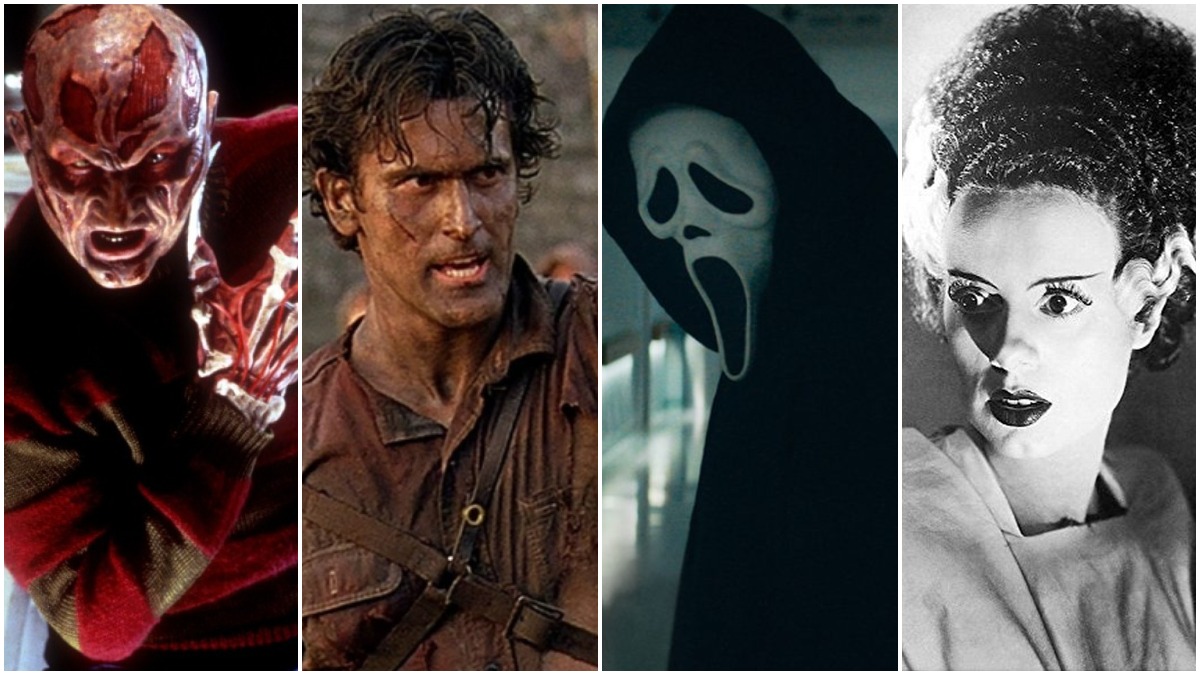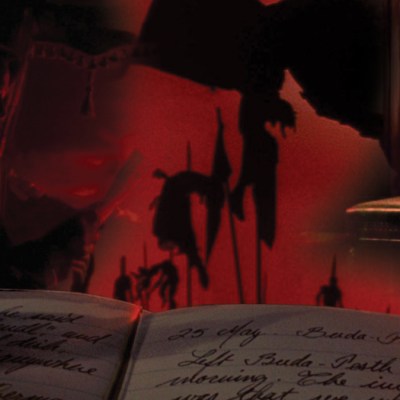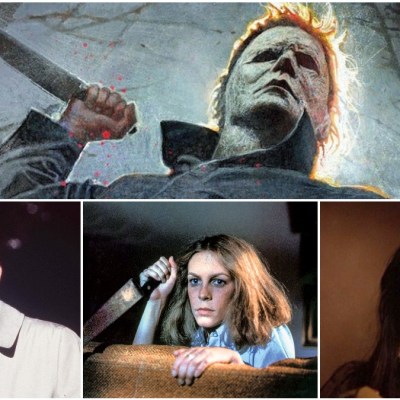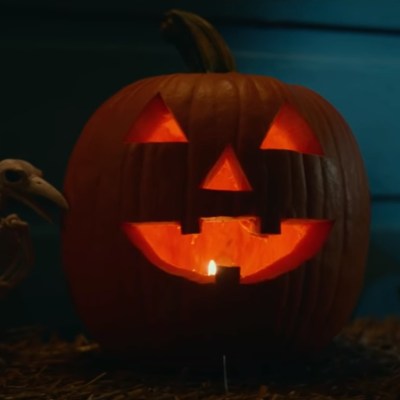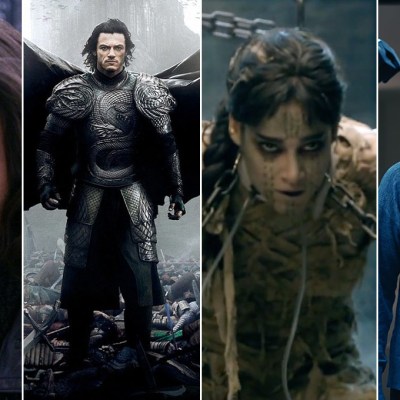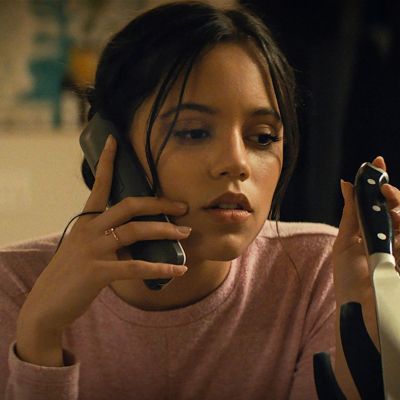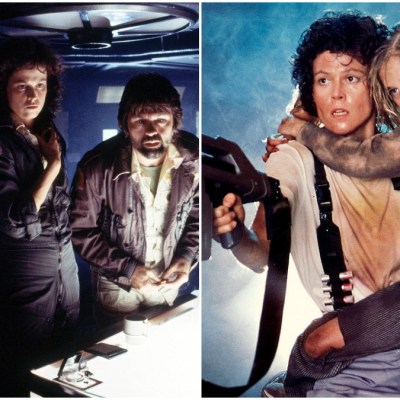What’s your favorite scary movie…. sequel? Had to think about it for a minute, didn’t you? Despite the horror genre being replete with sequels, prequels, requels, and spin-offs, the stuff nightmares are made of generally go down better the first time. In fact, how often can we say the second movie in a horror franchise—never mind the fifth—is even just okay? It’s rare, but when it happens it makes the fear all the sweeter.
For that reason, we here at Den of Geek have put our heads together and come up with a list of what we consider to be the best horror sequels to ever slice and dice across the screen. Admittedly, some of our favorites just missed the cut, and we’re sorry to leave out Hellraiser II, C.H.U.D. 2, and Friday the 13th Part VI (honest!), but on the whole we think the below films are a cut above, and certainly better than what you normally expect from a horror add-on.
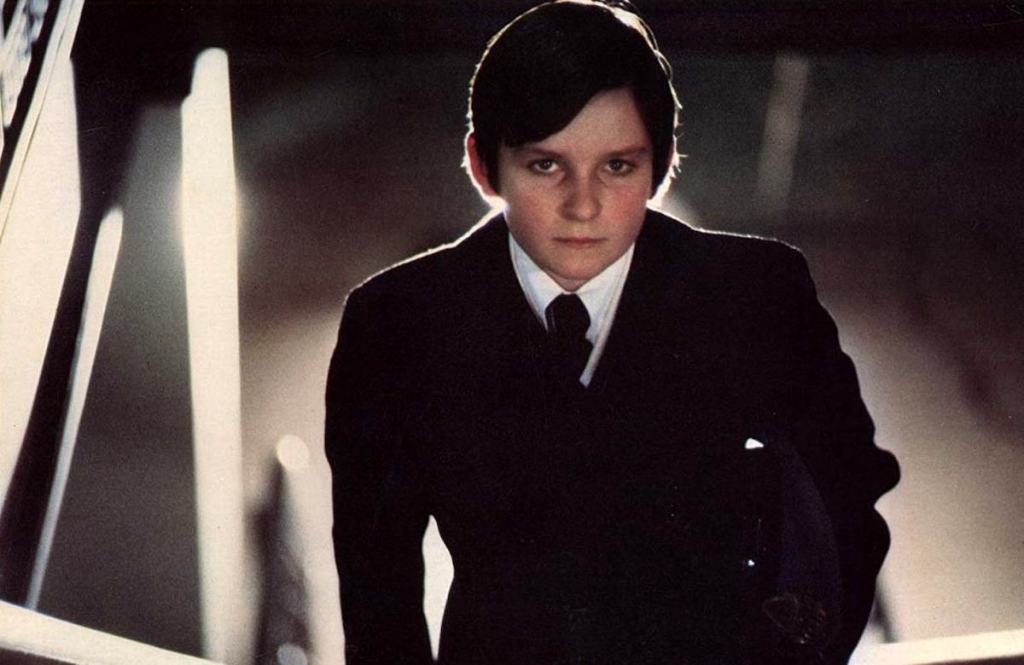
20. Damien: Omen II (1978)
Richard Donner’s The Omen (1976) is one of the seminal horror films of its decade, tapping into fears of Biblical apocalypse in the same way that The Exorcist channeled parents’ anxieties over youth culture. But The Omen was also the standard bearer for the creative “accidental” death scene, dispatching most of its cast in inventive ways echoed by countless films since, most notably the Final Destination series.
Donner did not return to direct Damien: Omen II, with journeyman Don Taylor (Escape from the Planet of the Apes) taking the helm. Instead of the clever plot of the first film—in which the Antichrist is born and placed in the unwitting care of a rising American politician—this one just doubled the amount of kills and strung them on a thin story about Damien reaching puberty and finding out who he really is. It’s not a great movie, but Omen II is well-made and some of the deaths are quite spectacular (including dismemberment by elevator cable and impalement on a train car), with another excellent Jerry Goldsmith score and a solid cast led by William Holden and Lee Grant. Call this one a guilty pleasure. – Don Kaye
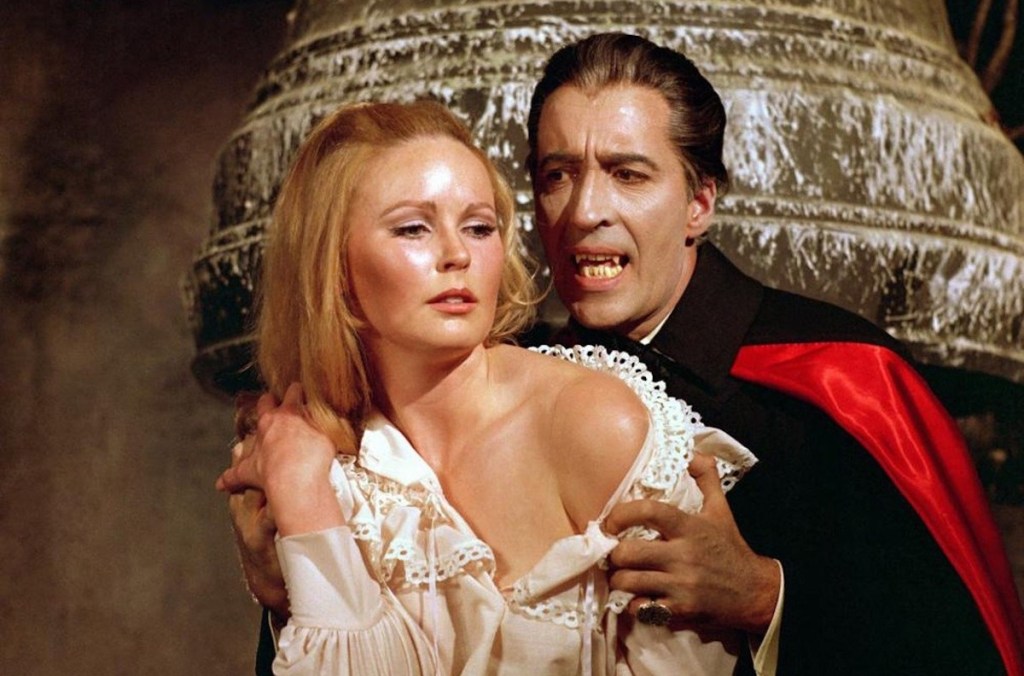
19. Dracula Has Risen From the Grave (1968)
Unless we’re talking The Legend of the 7 Golden Vampires or Carmilla adaptations, Hammer Films rarely strayed from the classic Dracula formula of the count feasting on unsuspecting villagers (or hippies, as is the case in Dracula A.D. 1972). There’s no question that 1958’s original Horror of Dracula remains the best of Hammer’s vampire offerings, as well as the legendary Christopher Lee’s best performance as the count. But if you want a Hammer sequel that slightly subverts audience expectations, look no further than 1968’s Dracula Has Risen From the Grave.
Read more
Yes, all the familiar set pieces are still there: the Count sneaking through a damsel’s open window, a holy man who will stop at nothing to vanquish evil, and a hero who journeys into darkness to save the love of his life. But in this one, the holy man is betrayed by his own faith and the hero isn’t so heroic (or loyal to his lover), which brings us to a tense third act where they must tangle with the truth about themselves before they can take down the vamp. It’s good fun and I’d recommend washing it down with Taste the Blood of Dracula (1970), which is the one where Drac gets enthusiastic victims to do his dirty work and slaughter their square Victorian parents. – John Saavedra
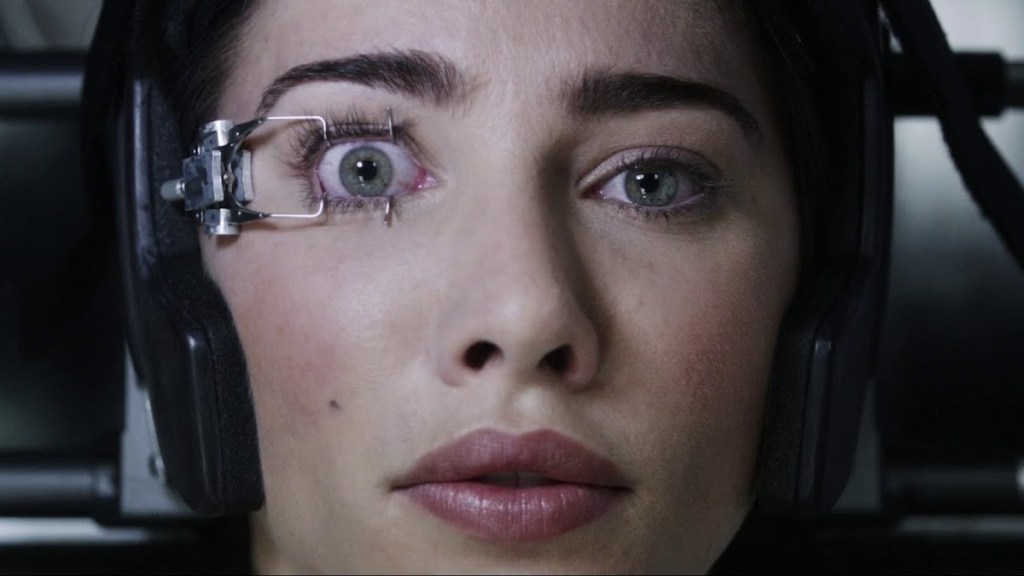
18. Final Destination 5 (2011)
What? The fifth installment of a formulaic, glossy teen horror franchise is on the list? Are you drunk Den of Geek? Well yes, but that’s not the reason this entry is here. FD5 is a genuinely excellent movie that leans very heavily into the fact that everyone watching the film already knows the rules. Those rules being: 1. A catastrophe occurs (a bridge collapsing, in this case—what a set piece!); 2. Because of some sort of premonition, some people survive; 3. But after surviving, they’re then picked off by household objects until… 4. Someone does or does not ‘cheat’ death.
FD5 is a tease, which holds the audience in a permanent state of excruciating tension. Will it be that nail that kills her? The air conditioner? The athletic beam? FD5 takes us to new heights of anxiety where absolutely every tiny thing is potentially a killer. And it’s brilliant and funny, and awful at the same time. Final Destination 5 should also be applauded for being one of only a handful of films which actually benefits massively from 3D. Because what is 3D for if not to poke you in the eye with a sharp spike? It also has a really clever end which brings the franchise full circle. Hats off to you, five, you pulled a blinder. – Rosie Fletcher

17. Bride of Chucky (1998)
Chucky creator Don Mancini once suspected that 1991’s Child’s Play 3 might be the end of the line for his flame-haired killer doll. But when he saw Wes Craven reignite the slasher genre with Scream later in the decade, he was inspired to bring Chucky back by embracing the “absurdist particulars” of the franchise. From then on, the Child’s Play series would deliver some genuinely weird and oddball surprises, starting with the favored Bride of Chucky in 1998, which brought back serial killer Charles Lee Ray and gave him an ex-girlfriend to die for.
Running with the ludicrous idea that a murderer could use voodoo to inhabit the body of an oversized kids toy, Mancini added Lee Ray’s sometime-fiancé Tiffany Valentine (Jennifer Tilly) to the mix. As the movie gets underway, Tiffany is punished for her hubris in mocking Chucky’s current state and soon wakes up trapped in a bridal doll she’d bought to mock him. We can only watch with glee as Chucky (voiced as ever by the great Brad Dourif) and Tiffany then embark on a road trip to end all road trips, with bodies piling up as they stoke their floundering romance. There have been plenty of Chucky sequels since Bride of Chucky, but none of them have had the success of this game-changing entry. – Kristen Howard
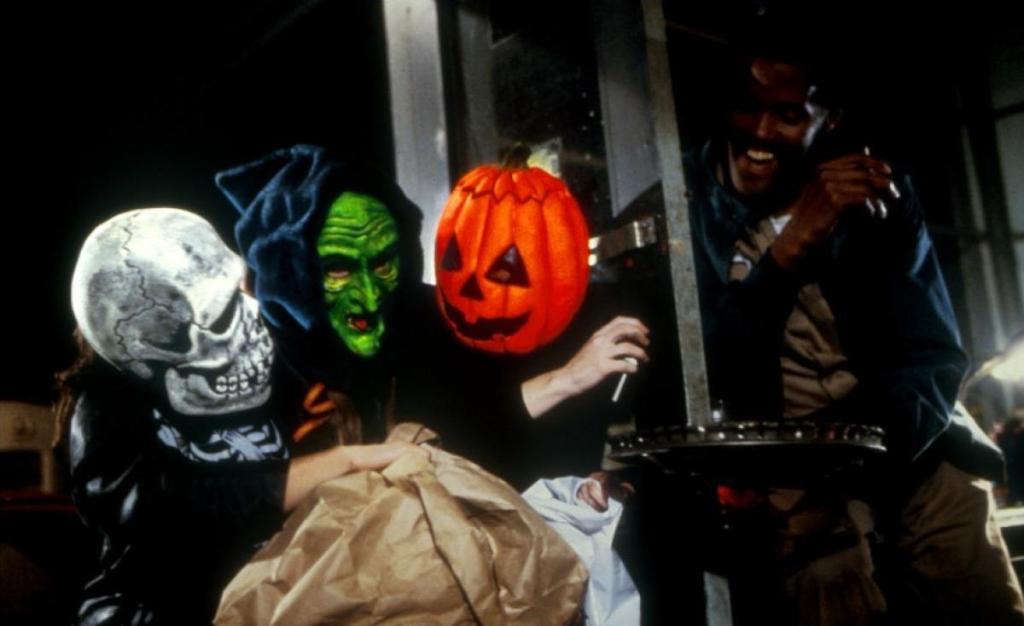
16. Halloween III: Season of the Witch (1983)
Halloween III: Season of the Witch remains the only entry in its franchise that doesn’t feature the instantly recognizable antagonist, Michael Myers, and for good reason: audiences hated the idea that Halloween was to become a series of anthology films that left their beloved slasher-killer in the rearview. And this film’s reviews and box office certainly reflected that disappointment. But in the decades since its release, Season of the Witch has found its audience and is now considered by many franchise fans as the only sequel that truly delivers the creepy, horrifying goods.
Halloween III: Season of the Witch follows a doctor and the daughter of a murder victim as they uncover a horrifying plot by a Halloween mask maker called Conal Cochran, who is cooking up a mass murder plot for All Hallows’ Eve with the help of an ancient Celtic ritual and a Stonehenge boulder. Having sold his Silver Shamrock masks to millions of excited children, Cochran plans to trigger them all with a TV commercial on Halloween night. Can this madman be stopped? Dare to find out in this unsettling and underrated sequel! – KH

15. Halloween (2018)
Ever since John Carpenter sprang the immortal Halloween on us in 1978, the river of horror cinema has flowed with both the slasher classic’s spiritual offspring—in the form of countless imitators, good and bad—and its own direct descendants: a boatload of sequels, reboots, and remakes, totaling 12 to date. Somewhat surprisingly, as compared to other franchises, several of the Halloween sequels are pretty good. Halloween II is an effective follow-up, Halloween III: Season of the Witch has gathered a cult following all its own, and Halloween 4: The Return of Michael Myers is an underrated gem.
Read more
But the best of them all is David Gordon Green’s 2018 sequel/reboot, which ignored everything that had come before to serve as a direct continuation from the original movie. The film not only introduced us to an aged but still terrifying Michael Myers, but brought back Jamie Lee Curtis as a tormented Laurie Strode, whose entire life has been shaped by her encounter with The Shape. Green dispensed with the tangled, frivolous continuity of the previous sequels, clearing a path for this movie’s message about trauma and memory to come through clearly and powerfully. Taking into account the diminishing returns of so many horror franchises, 2018’s Halloween was far, far better than it had any right to be. -DK

14. Doctor Sleep (2019)
Making a sequel to The Shining, one of the greatest horror movies and novels ever conceived, always seemed like a doomed effort. And as brilliant as he is, author Stephen King didn’t dispel those notions when his uneven Doctor Sleep novel was published in 2013. So all the more credit must be given to writer-director Mike Flanagan for threading the needle and making a film that works as an effective and moody chiller, even if it inevitably never reaches the heights of Stanley Kubrick’s 1980 masterpiece.
Flanagan’s magic trick begins by mostly marrying the incongruent elements between King’s books and Kubrick’s more cerebral adaptation of the first story. But the director’s success continues by crafting an intelligent and even heartfelt portrait of Danny Torrance, the little boy from The Shining, in middle age. Ewan McGregor does admirable work as the haunted son of Jack Torrance, but it’s Rebecca Ferguson as Rose the Hat, a literal psychic vampire, who makes this movie chill to the bone. The scene where she and her ancient cohorts feed on a young child will haunt your dreams long after you forget all the fan service at the Overlook Hotel. – David Crow
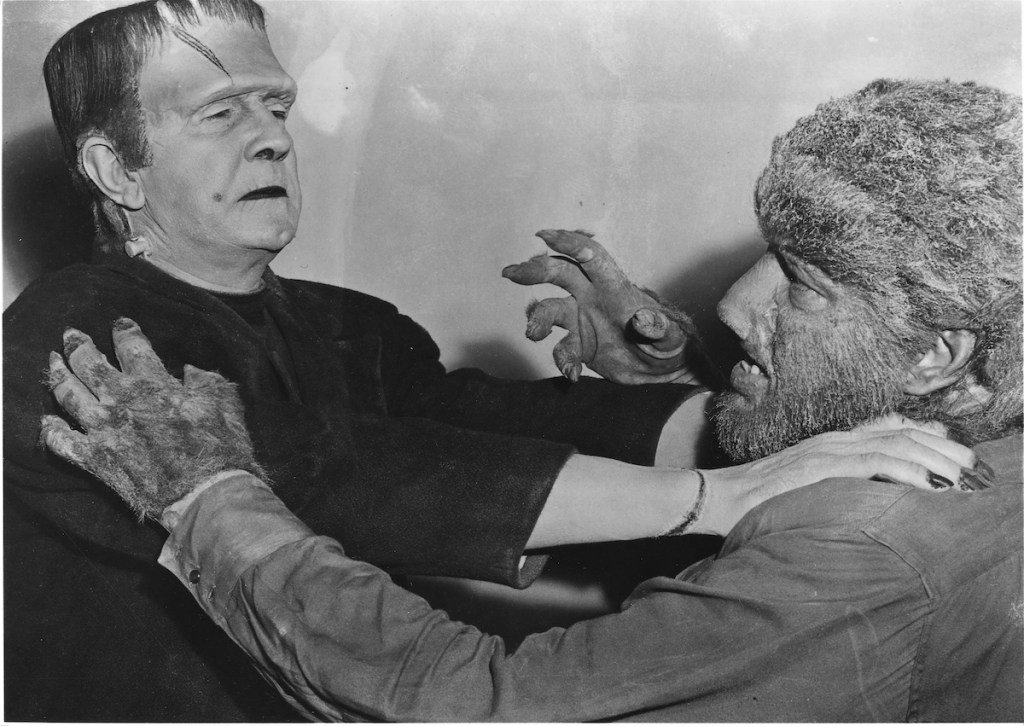
13. Frankenstein Meets the Wolf Man (1943)
With a title that sounds like the beginning of a bad joke, Frankenstein Meets the Wolf Man should’ve never worked. There are plenty of Universal Monster sequels from the 1930s and ‘40s that didn’t, hence why they’ve largely been forgotten by the sands of time. And yet, there is something undeniably charming about the first ever cinematic universe crossover.
This is due in large part to screenwriter Curt Siodmak. He was one of the creative secret weapons who made The Wolf Man (1941) a late era classic in the monsters cycle at Universal Pictures. It was also Siodmak who both coined the title of this movie and had the good sense to still write it as basically a Wolf Man standalone picture. We once again follow Lon Chaney Jr.’s doleful eyes as the doomed sad sack Larry Talbot, instantly pitying yet fearing the poor bastard as his plight as the greatest cinematic werewolf continues. But in this movie’s case, it just so happens that plight takes him on a journey that crosses paths with the Frankenstein Monster (Bela Lugosi).
Read more
Admittedly, Lugosi is pretty lousy as the Monster, not least of all because Universal gave him dialogue due to the character having the brain of Ygor in his head after the last movie (don’t ask). After seeing dailies, however, the studio quickly realized it was comical seeing the Monster whine with a Hungarian accent. They therefore cut his scenes to pieces to erase the mistake. Luckily, this is really Talbot’s movie, and it works in that vein as a melancholic follow-up to one of the best monster flicks, only with a Frankenstein bash at the end. – DC
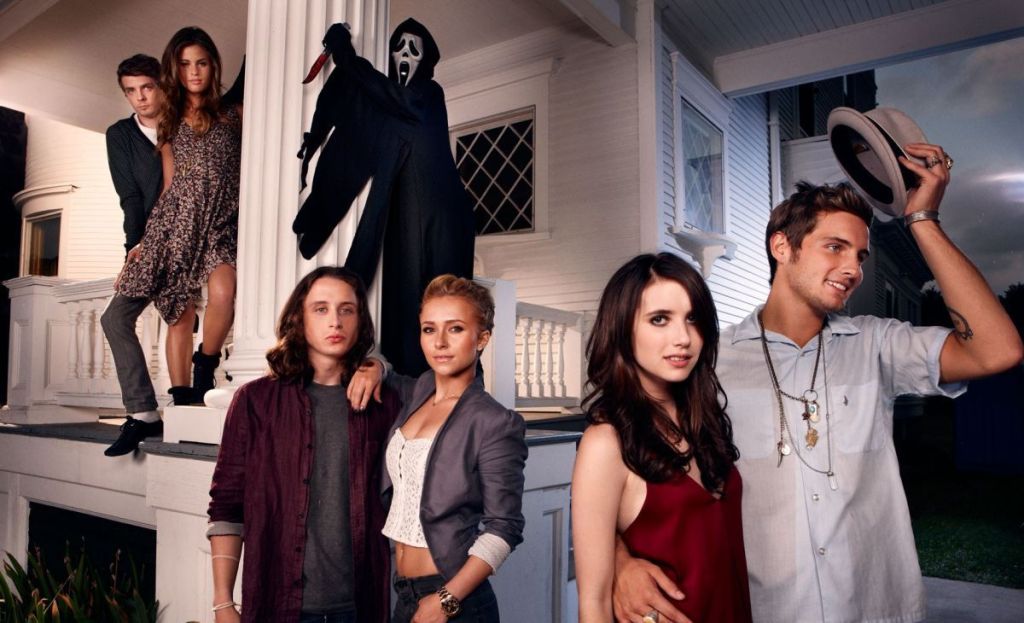
12. Scream 4 (2011)
Scream 4 is the rare horror sequel that’s upfront about the foibles of making horror sequels. After all, the film came more than 10 years after the ending of what was always intended to be only a Scream trilogy. So Scream 4’s opening prologue, which reveals you’re watching a movie within a movie that’s still yet within another movie, is an amusingly naked admission about the diminishing returns that come with doing countless continuation to any story, especially one as meta and self-aware as Scream.
Read more
Luckily, the rest of Scream 4 largely works as both a middle finger to Hollywood’s lazy obsession with horror remakes in the 2000s and, unintentionally, the legacy sequel (or “requel”) craze that was about to explode in the 2010s. Both types of reboots are skewered by director Wes Craven and screenwriter Kevin Williamson, whose ending also sharply satirizes online social media culture while declaring “don’t fuck with the original.” The movie’s similarly playful tone justifies its existence, as does the shrewd addition of a 21st century horror hipster via Hayden Panettiere’s scene-stealing Kirby Reed—a gorehound who can name (and thereby shame) every regurgitated horror redo of the 2000s in the movie’s best scene. – DC

11. The Conjuring 2 (2016)
Director James Wan birthed one of the most influential horror films of the 2000s with his second film, Saw. But when he and screenwriter Leigh Whannell stepped away from that franchise after one movie, it became something else. Perhaps that’s why they both stayed on longer for the next two seminal horror franchises they had a hand in, including Wan’s follow-up to the 2013 smash hit, The Conjuring.
Like its predecessor, The Conjuring 2 is an unapologetically old-fashioned haunted house thrill ride, intent on popping out and making you jump by constantly saying “boo.” But no one in the last decade is better at jump scares than Wan, who takes an almost fiendish glee in elaborately building each set piece with his dazzling camera movements. He and screenwriters Chad and Carey Hayes also continue the first movie’s emphasis on strong characterization, finding affection and time to linger on the family dynamics of the film’s victims, and the warmth of its heroes Ed and Lorraine Warren (Patrick Wilson and Vera Farmiga). You may have seen this type of movie plenty of times, but never in a context where you swoon as a ghost hunter sings Elvis Presley.

10. Nightmare on Elm Street 3: Dream Warriors (1987)
Okay, hear us out, how about Nightmare on Elm Street, except this time the kids are superheroes? Whether by design or not, that is more or less the conceit thought up by screenwriter Frank Darabont, working from a story idea by a briefly returning Wes Craven, in this Freddy Krueger threequel. It’s also the film that more or less established the tone of what a Freddy movie is going forward. Whereas the first was a chiller, and the second an interesting homoerotic werewolf-like thriller, Dream Warriors is a fantasy-adjacent comedy wherein Robert Englund’s killer brings the yucks.
Read more
From the moment Freddy’s emerges from a TV to say, “Welcome to primetime, bitch,” before shoving his next victim’s face through the glass, the Nightmare movies became about visual sight gags and killer puns—except, you know, with actual kills. It’s silly, but this one is the last Nightmare movie where audiences could at least care about some of the protagonists, including Heather Langenkamp’s returning Nancy. – DC

9. 28 Weeks Later (2007)
Danny Boyle and Alex Garland’s 28 Days Later was a game changer for the zombie genre, the film that inspired a whole new era for movies and shows about hungry flesh-eaters, including juggernauts like The Walking Dead and Zack Snyder’s Dawn of the Dead. Needless to say, director Juan Carlos Fresnadillo had some very big shoes to fill with 2007’s 28 Weeks Later. Fortunately, he knocked this sequel out of the park by focusing on what made the original such a tour de force: an intimate tale about a family trying to stay together amid a catastrophe beyond their control. That, and a couple truly terrifying zombie scenes.
The film follows Don (Robert Carlyle), a widower who is finally reuniting with kids Tammy (Imogen Poots) and Andy (Mackintosh Muggleton) after the outbreak that shut down the UK in the first film. NATO has built a safe zone in the Isle of Dogs where citizens can slowly begin resettling the country and rebuilding their lives. But when Tammy and Andy escape the walls of the quarantine zone to visit their old home, they find more than old keepsakes. The Pandora’s box of horror is quickly opened in this hour and 40 minute thriller, as the virus inevitably finds its way back into the safe zone and the infected begin wreaking havoc on their loved ones and the U.S. military alike.
Rose Byrne, Jeremy Renner, Harold Perrineau, and Catherine McCormack also put in great performances as they scramble to get out of the country however they can, but it’s really Carlyle, Poots, and Muggleton who sell this sequel as a family trying to come terms with a past tragedy, even as they find themselves in the middle of a new, even more gruesome one. – JS

8. Army of Darkness (1992)
Is Army of Darkness horror? Is Army of Darkness comedy? Good or bad, horror or comedy, it’s the one with the broomstick, so hail to the king, baby. In the third and final part of Sam Raimi’s original Evil Dead trilogy, the demented auteur finally leaves his cabin in the woods setup for a riff on A Connecticut Yankee in King Arthur’s Court, only his yankee is the loud and ugly American, Ashley Williams, played here at the peak of his chauvinistic entitlement by Bruce Campbell.
Truthfully, Campbell’s low-rent charm and Raimi’s ludicrous visual gags go a long way to carry this nonsensical plot over the finish line. There’s some lip service paid to the Book of the Dead, aka the Necronomicon, transporting Ash back to a nondescript Medieval kingdom where Deadites and demons roam the forests. But this is just all a pretext to see Campbell’s ample chin in chainmail as he wields a chainsaw like Excalibur across canted angles. It’s a gonzo gorefest done right, and just so damn quotable. – DC
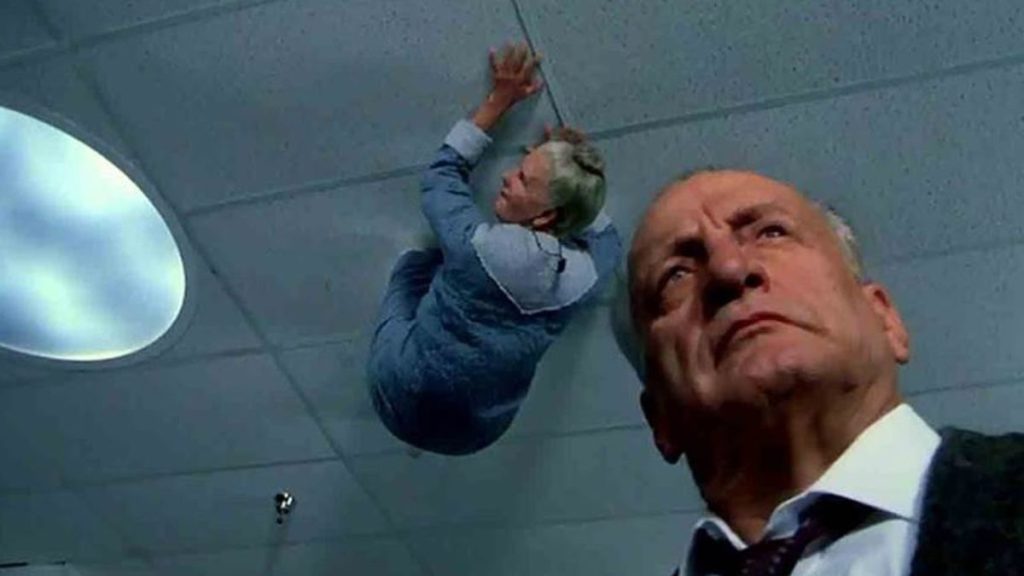
7. The Exorcist III (1990)
Although The Exorcist arguably remains the greatest horror film of all time, William Friedkin and William Peter Blatty’s classic has had a poor track record when it comes to sequels and prequels. Of four Exorcist films produced in the nearly 50 years since the original came out, only The Exorcist III is worthy of its name—and it’s a damn fine genre outing in its own right. Directed by Blatty himself, who also adapted it from his novel Legion, The Exorcist III stars George C. Scott as Detective Kinderman (the role originated by Lee J. Cobb in The Exorcist), who suddenly finds himself investigating a series of gruesome, ritualistic murders that connect to both an old serial killer case and the possession of Regan MacNeil.
Blatty creates a suffocating sense of dread throughout the film, ratcheting up the tension until he gets to a stunning murder set piece in a hospital corridor that is one of the finest sequences of its kind in all of horror cinema. The studio-mandated exorcism jimmied into the end of the film is a letdown by comparison, but it doesn’t damage the power of the central narrative. Scott chews the scenery with abandon, Ed Flanders and others provide a bevy of quirky character turns, and Brad Dourif is truly chilling as the mysterious figure at the heart of the story. – DK

6. Scream 2 (1997)
Released less than a year after the original Scream, number two had momentum on its side. The main cast from the first film returned, as did legendary director Wes Craven and meta-slasher master Kevin Williamson, who once again handled scripting duties. As with reality, Scream 2 takes place a year later, but rather than doing the typical slasher movie schtick of taking place at the same campsite or cursed suburban street, we move on with Neve Campbell’s Sidney Prescott to an idyllic and sunny college campus. That is until the stabbings start up again.
While Scream 2 sticks to the originals format—funny, meta, a whodunnit element—this one apes the rules of the typical Hollywood sequel, as well as the media circus around murder cases and the pursuit of fame in the 1990s. The worst thing about the movie is that it killed off Jamie Kennedy’s franchise favorite, Randy (but the bodycount is always higher in the sequel, as Randy himself point out). Even so, it kept us guessing as to whether our heroes would make it to the end, pulled a satisfying rug out from under David Arquette’s bumbling Dewey, and took us further into the meta rabbit hole by establishing the in-movie Stab franchise, based on the true (fictional) story of what happened to Sidney Prescott. Stylish and full of panache. – RF

5. Evil Dead II (1987)
Sam Raimi’s sequel to The Evil Dead may have turned into a cult classic, but it was never supposed to exist at all. Originally, Raimi wanted to move straight on to the Middle Ages time travel story that would later become Army of Darkness, but after finding no takers in Hollywood, the director went back to the drawing board and finally caught the attention of an interested party in larger-than-life Italian producer Dino De Laurentiis, who pushed for the sequel to go back to the “cabin in the woods” basics of the original. The rest is history. Bruce Campbell, who starred in the first film, returned as protagonist Ash Williams, and so did the Deadites!
Although Evil Dead II rehashes some of Raimi’s first film, it became a beloved sequel by embracing a lot more of the slapstick and hyper-kinetic visual trickery that would become a calling card as his career progressed. Fans of the franchise are known to argue about which installment of Evil Dead is their favorite, but Evil Dead II usually comes out on top by way of massively improving on the original. – KH
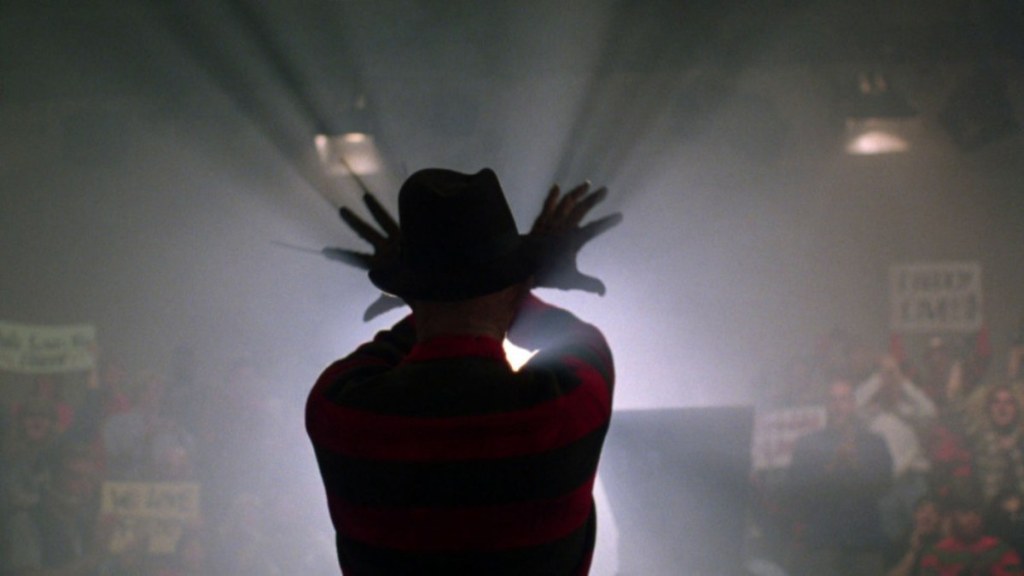
4. Wes Craven’s New Nightmare (1994)
Before there was Scream, there was New Nightmare, a movie that was as much a reinvention as a traditional sequel. In this film, writer-director Wes Craven and studio New Line Cinema—the famed “House that Freddy Built”—take a sledgehammer to that home and the pop culture legacy left by Craven’s first A Nightmare on Elm Street (1984). Made a full decade later and after New Line ultimately ran Nightmare and the Freddy Krueger character into the ground with nearly a sequel every year (plus a Christmas album!), New Nightmare has enough hindsight and perspective to ask… is the pop culture saturation of slasher movies a good thing?
In Craven’s first meta movie, he casts himself in a supporting role as the aloof and perhaps not-so-humble genius, Wes Craven, a fateful background player in the life of Heather Langenkamp (played by Heather Langenkamp). Heather starred in the first and third NOES movies, but even though that series is now over with the last installment literally being titled Freddy’s Dead (1991), Heather is receiving strange phone calls in the middle of the night from a a voice that sounds like Robert Englund’s Freddy…. and she’s having bad dreams.
Craven blends his fiction with the real lives of his stars, including Englund who also plays himself in the film, and even picks at actual creepy incidents such as Langenkamp’s troubles with a stalker. In doing so, he attempts to ask in an allegorical context some open-ended questions about the nature of scary stories, especially in as commodified and industrialized a context as capitalistic Hollywood. He takes knife hands to critics of his movies while also clawing at what New Line did to Freddy in his absence. Most of all though, he makes Freddy scary again and his victims sympathetic. It’s the best Nightmare movie since the original. – DC

3. Dawn of the Dead (1978)
The late, great George A. Romero was the master of interweaving social commentary into zombie flicks. 1968’s Night of the Living Dead was a knockdown of racism and Cold War paranoia. A decade later, Romero revisited some of those same things while also turning his attention to one of the other great perils of modern life in a capitalist society: unchecked consumerism.
Dawn of the Dead follows a group of policemen and reporters as they make their escape from zombie-infested Philadelphia and hole up in a mall full of all the supplies they’ll need to survive the apocalypse. The only problem is that the mall is also filled with flesh-eating shoppers who, despite being undead, have shambled on back to their favorite palace of consumerism. The zombies creep around the mall’s hallways while the survivors enjoy the spoils found inside the stores.
It almost seems like paradise until one of the survivors is bitten and a group of bikers decides to pay the mall a visit. What proceeds is one of the most gruesome (and kind of hilarious) third acts in zombie movie history. Best of all, Ken Foree, David Emge, Scott Reiniger, and Gaylen Ross are all great in this film. – JS

2. Aliens (1986)
Aliens was just the third film directed by James Cameron (and the first written solely by him), and it was a project born out of incredible difficulty. Despite the success of the original Alien, 20th Century Fox was hesitant for a long time to move forward with a sequel, reluctant to bring back Sigourney Weaver as Ripley, and flat out uninterested in having Cameron direct until the surprise success of his The Terminator forced their hand. And aren’t we glad that happened, since Aliens is not just the equal of—and perhaps even superior to—Ridley Scott’s Alien, but a sci-fi action classic in its own right.
Read more
Instead of going back to the “haunted house” horror trappings of the first movie, Cameron combined that with military action and more overt sci-fi, creating a movie of incredible suspense, intensity, and visceral power. And by bringing back Weaver’s Ripley front and center, and letting her evolve from a traumatized survivor to a fierce warrior and mother figure, Aliens was far ahead of its time with its groundbreaking depiction of a female action lead. Add a spectacular supporting cast of space marines, excellent special effects, and a knockout final confrontation between Ripley and the Alien Queen (“Get away from her, you bitch!”), and you have one of the greatest sequels of all time. – DC
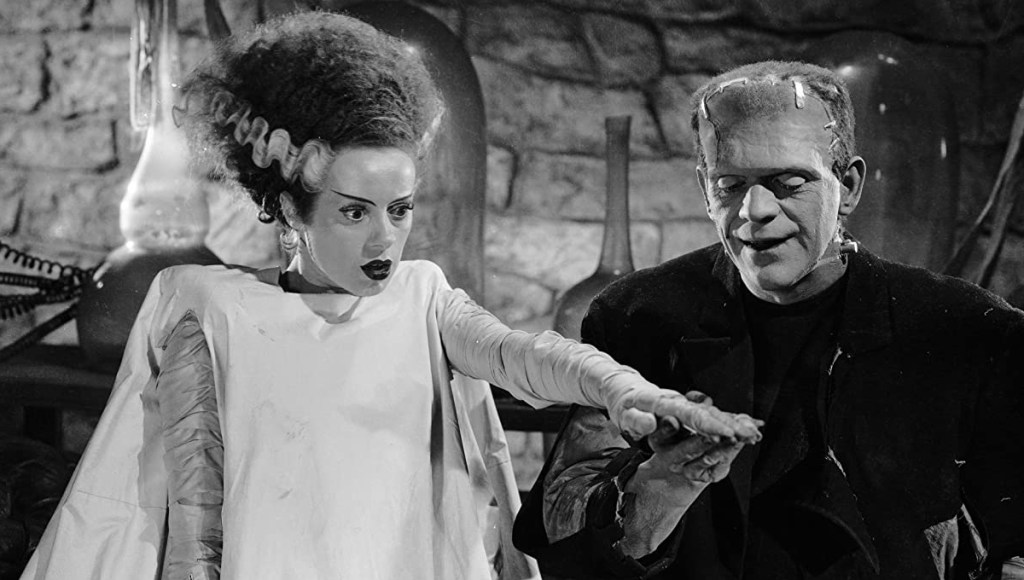
1. The Bride of Frankenstein (1935)
What was arguably the first horror sequel remains the best nearly a century later with James Whale’s The Bride of Frankenstein. Whale initially did not want to make another Frankenstein movie. A brilliant but underrated director in his own lifetime, the filmmaker struggled his whole career with not being pigeonholed as strictly a horror director. Plus, he already did an earnest and eerie take on the Mary Shelley story in the seminal 1931 film version of Frankenstein.
But when Universal Pictures gave Whale carte blanche on the follow-up, he used the opportunity to discreetly make the first horror-comedy on a grand and operatic scale. Everything about Bride of Frankenstein is bigger than its predecessor, and more decadent too. There are the sprawling sets, flirtations with whimsical camp via the introduction of Dr. Pretorius’ black magic creations, and the not-so-good Dr. Pretorius himself (fabulously played by Ernest Thesiger). He’s a flamboyant, blasphemous, and queer-coded fiend that the film and director clearly agree with more than sad sack Dr. Henry Frankenstein (Colin Clive). In fact, Frankenstein appears to have survived the first film solely to be seduced by Pretorius into creating a woman without the actual help of any women.
It was transgressive stuff, and it’s all told in the most visually sumptuous film to come out of the Universal horror movie line. This movie was also the one with the greatest wealth of feeling from the 1930s horror classics. Indeed, Whale can take his tongue out of his cheek for long stretches of the picture as he and Boris Karloff acutely develop their Monster into a fully formed person who can befriend a blind man, comprehend abandonment, and finally wallow in rejection in the heartbreaking climax with Elsa Lanchester’s iconic (and too briefly seen) Bride. They really don’t make them like this anymore, because Bride is a singular masterpiece.
